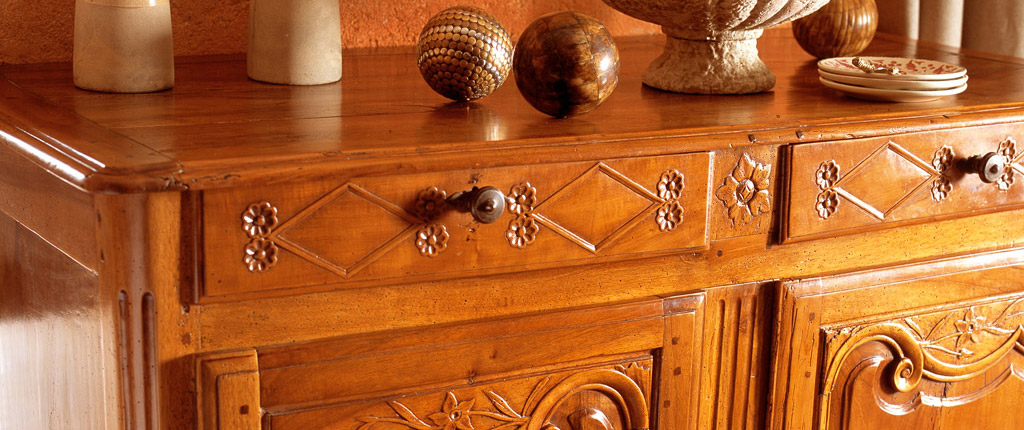
For more than a century Liberon products have been enhancing surfaces and enriching the spirit of homes; furniture, wood and stone flooring, gardens and patio, metals and picture frames. Whether renovating or creating your own unique pieces of work Liberon will guide you through your project to ensure it’s a success.
History
In 1912, Georges Libéron, took over a company that manufactured products for painters and gilders and set up business at 163 Saint-Denis Road in the heart of Greneta courtyard. Situated close to the suburb of Saint-Antoine his customers were primarily made up of professional gilders and cabinet makers.
Conscious that the arrival of offset printing would reduce sales of varnish and dyes Georges Libéron decided to diversify into furniture maintenance, launching a new range – the ‘Blue Line’. The range consisted of various water-repellent furniture polishes which won awards at the World Show in Paris in 1900 and were patented in 1902. Containing a disinfectant and parasiticide Liberon’s furniture polish gave the wood an unparalleled shine whilst meeting the draconian cleanliness standards set down by the hygienists of the time. Offered as a paste or a liquid the furniture polishes in the Blue Line range made looking after floors and furniture much easier. The paste wax ‘Oke’, a un-rivalled product, became the miracle maintenance product for all surfaces and guaranteed perfect cleanliness. The keen interest in the new products convinced Georges Libéron to develop new formulas for looking after surfaces in the home.
At the beginning of the 50’s scientific and technological progress brought about interest in home decoration. An increase in spending power and the introduction of credit enabled households to treat themselves to designer items. Aluminium, glass, formica and plastic were the new materials adopted by the manufacturers. The furniture was brightly coloured and needed to be maintained in a different way.
The idealised image of the domestic fairies changed. Influenced by social patterns from America, advertising, cinema and fashion broadcast images of women that were always happy, stylish, dynamic…. true angels of the home!
Liberon seduced households which had very often entered into active lifestyles, by offering them products adapted to modern surfaces and their new way of life. A spray wax appeared, Rapid-Lak in a small container … the packaging adapted to the product usage.
The ‘Red Line’ range, of which Black Bison was the star product, completed the ‘Blue Line’ range. ‘’We Liberon’’, proclaims Liberon ‘’have forgotten steel wool and cloths…..’’
DIY begins to grow during the 1970’s. Synonymous with a feeling of obligation and the need to save money it was initially focussed on repairs and maintenance. However during the 1980’s the perception of the home changed: it became a place for socialising and partying. DIY became a pastime which was shared by all social classes and with it brought new high achievers: women! Second hand shops, previously empty units and trade depots multiply, bringing together bargain hunters and budding decorators who are eager to unearth the ‘forgotten piece’ that they can restore or transform. Liberon’s decorative effects range develops alongside these trends and enables individuals to express their creativity and personalise items to their own tastes: casein paint, patinas, transparent layers of paint, crackle glaze and sponge painting awaken the spirit of Mediterranean furniture. Far from having a unique style, decoration at this time is a mix of eras, cultures and trends in line with moods and imaginations.

